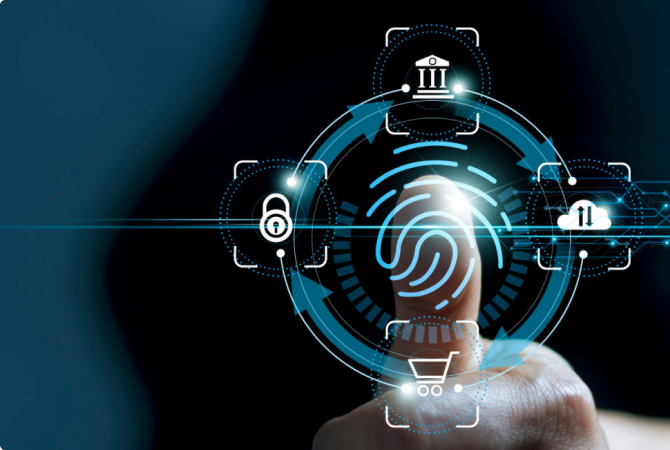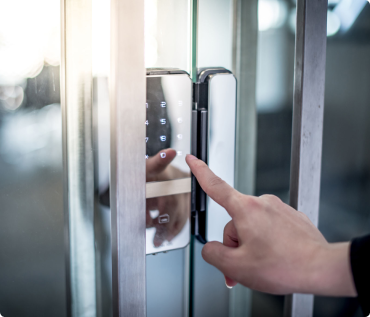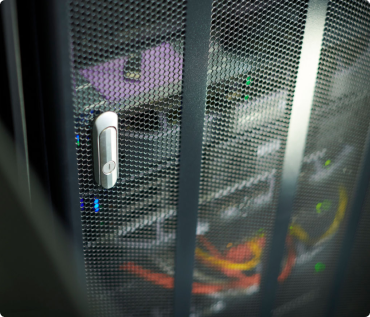Watching heist movies have always been one of the guilty pleasures everyone just loves to indulge. The thrill, the sitting-at-the-edges-of-our-seats excitement and the adrenaline rush when the professor speaks with the officers or when George Clooney pulls a fast one with his gang of misfits. What do their plans have in common? Surpassing the super-tight security systems without batting an eye. In real life, when we just say, “oh! That is so easy, anyone could do that” while chugging down a bowl of popcorn, it is real tough. Security systems now are super sharp and are built to take actions while recording and alarming the surroundings.
In this guide, we will learn what access systems are, how they work, what are the components, features and benefits. Along with those, this guide will also give you basic pointers how to choose an access control system.
- What is an Access Control System?
- What are the benefits of an access control system?
- How does an Access Control System work?
- What are the types of Access Control System?
- What are the applications of Access Control System?
- How to choose an Access Control System?
What is an Access Control System?
An access control system is a way of managing admission and exits of authorized users for an area at a particular time. Access control systems provide a medium for communication between servers to track and monitor events that are meant to be checked on a regular basis.
An access control system prevents illicit accesses by providing primary defense against any misconduct by employees or intruders. Along with the function of tracking and monitoring, some access control systems also manage alerting the main law enforcements with every single data sent across them in case of dangerous scenarios. With this let’s look into the working and the components an access control system uses
What are the benefits of an access control system?
There are so many benefits when you consider getting an access control systems, as discussed below:
- Time saver: with a fast paced world, access control systems save so much of time by using keyless approach with modern technology like swipes and app configurations that barely lets any user wait.
- Prevent security breaches and are reliable at any scenario.
- Tracking and reporting is possible without any manual intervention.
- Money saver as it required only initial investments on hardware and devices.
How does an Access Control System work?
The basic working principle of an Access Control system can be understood by a simple flowchart shown below. This depiction shows the standard working of an access control system and what the system does while reading the request.
With the above flowchart, one can understand that no matter what outcome the access control unit gives out, it also records and stores the result so that the auditing can be done from time to time. Now let us take a look at the main components of an access control system.
To get started with any access control system, there are three major components which contribute to the basic structure namely:
- User interface
- Admin interface
- Hardware and Infrastructure
USER INTERFACE
The user interface in an access control system is where the user side of the systems has a medium like keycard or fingerprint to raise a request to enter a particular premise. Thanks to the technology, mediums now exist requiring almost no contact to access. Although the traditional swipe cards and biometric fingerprint scan exist but many now work with apps downloaded in your phone which could be a great use in today’s pandemic scenario. The user interface is responsible for raising access requests and sending it to the control panel of the access control system.
ADMIN INTERFACE
The admin interface in an access control system is a portal where the raised request is administered. This portal is handled by a set of people assigned like manager, security or IT personnel who see whether the request checks all the credentials are met or not to allow access. This same admin is responsible to add a new user, delete old users and assign access required for that user alone. Editing the credentials for the user is also a role admin interface do. Admin interfaces generally use cloud storage so that multiple personnel can log into it and can be used from any location commonly used in multinational companies. Apart from this, the admin also audits the stored data. Auditing is a process where data is sampled and checked regularly to figure out all the rules are being followed properly.
HARDWARE AND INFRASTRUCTURE
No access control can work without hardware and infrastructures. These include the doors, the keypads, locking devices, revolving doors, electronic barricades and so on. Along with those, it also includes the control panels, the systems; CCTV’s which the admin personnel use for monitoring the premises.
The above figure depicts how access systems work. At first the admin authorizes new members with the credentials which he tries to authenticate in the hardware installed. This gets the new member details in the database. When the request is received in the system, after checking it validates and then it is monitored while it sends a message to the door latch to open. All this is recorded and stored in the system with the timestamp and location along with the new user details so as to identify later if required. With this data, it later is retrieved for the auditing to enhance the performance and eliminate anything that is lagging the same.
What are the types of Access Control System?
Types of access control system are as follows
- Discretionary access control system
- Mandatory access control system
- Role based access control system
DISCRETIONARY ACCESS CONTROL SYSTEM
This kind of access control system gives direct control to the owner of the particular premise through some interface for the control panel. This type is known for having the least number of restrictions and is generally not preferred. A discretionary access control system ends up giving control over the device and access that is not required for every user.
MANDATORY ACCESS CONTROL SYSTEM
The mandatory access control system is known for its application in highly confidential premises. This kind is known for its restrictive analogy. This type is designed to follow a hierarchical order where II every request to access for any action has to be checked with the standard policy set by the admin. This admin labels the users according to the roles assigned by the system. This way unnecessary control And access are avoided along with the security breaches. This kind of system makes sure that no policy is overridden by any user.
ROLE BASED ACCESS CONTROL SYSTEM
The role based access control system is a type where the access and permissions are assigned to the users based on their roles assigned which makes the work for the admin a lot easier. These groups can be classified based on position location or the type of authorities they have over the system. They also have control over this system based on attributes life needs resources for job title. With this classification the sensitive data is saved in such fashion that access can be requested for that job alone and other data is not compromised at all.
What are the applications of Access Control System?
Below are some of the prominent applications of an access control system:
- Healthcare - Storing medicines, test samples. Entry and exit of healthcare workers as well as the patients are needed to be recorded all the time for many purposes.
- Power structures like prisons and colonies which need to safeguard the visitors and the prisoners to make sure no misconduct or security breach happens.
- Financial organizations like Bank and ATM which need to monitor the entry and exit of customers in areas like lockers as these places work with valuables and large amounts of money.
- Hospitality like in hotels with key cards, the CCTV’s, same in case of amusement parks, concerts, public events and fairs.
- Maintaining communication between the stations and transports like metro subways, trains and buses etc.
- Airport security uses access control systems with scanners, and various mediums to avoid mishaps.
- Parking lot management, almost every building be it commercial or residential needs help with parking lots to ensure the surroundings are safe, access control systems are a huge help as they can even scan number plates and record all movements happening.
- Educational institutions like schools and colleges require access control systems to avoid any kind of misconducts and security breaches since there are kids and minors involved.
How to choose an Access Control System?
Choosing an access control system isn’t a tough process. All a user has to do is check his system’s requirements and keep the following points in mind:
- Compatible with all kinds of hardware and software used, because most access systems used a third party to work with.
- Able to incorporate with surveillances and other security systems along with alerting the nearest law enforcements available in that area.
- Save capital cost by able to fit in with the existing machinery and software.
- To be able to work with multiple ways of inputs like no contact access in this pandemic time.
- Highly robust in structure and reliable as well.
- Support various modes of communication as well to send data or alert.
In conclusion, access control systems are a vital part of the society we live in, or the kind of job we report to. Access control systems are needed to avoid many mishaps that we come across as well as to alert through proper channels. These systems are the silent superheroes saving us from many troubles and letting us work or experience everything without any disturbances.





